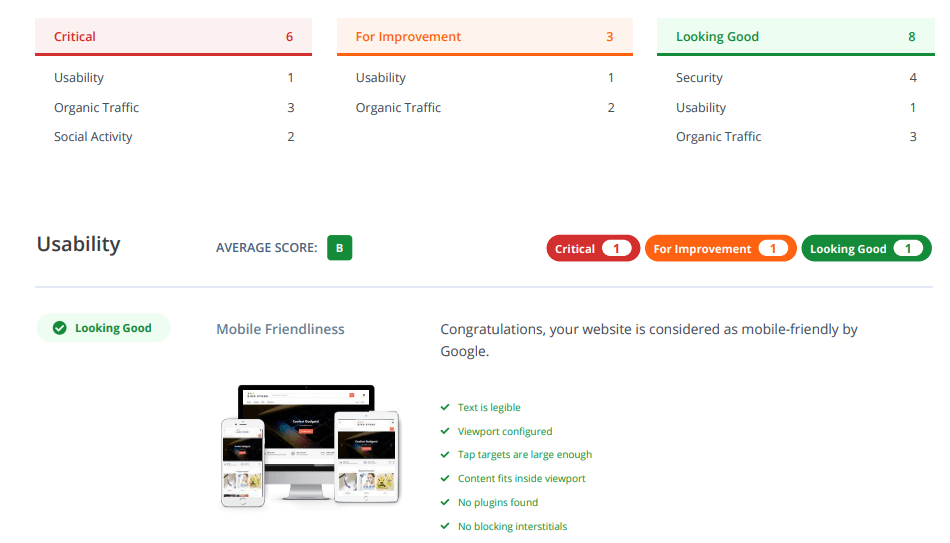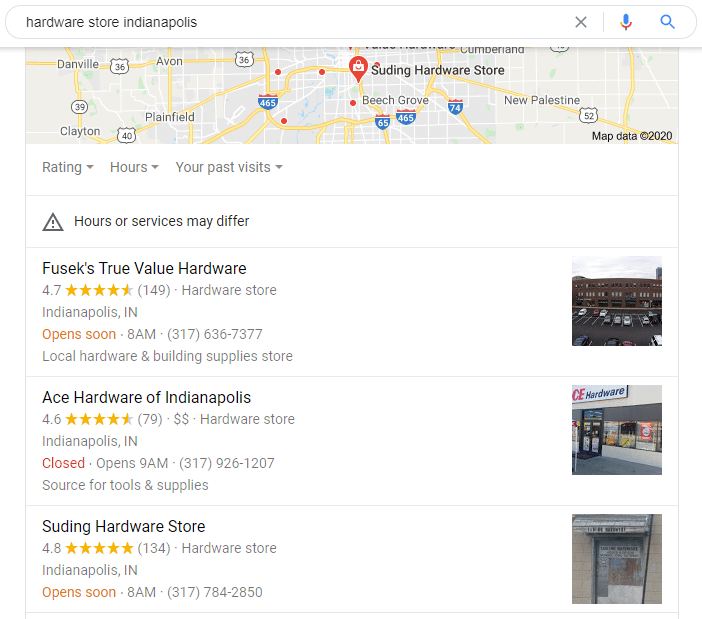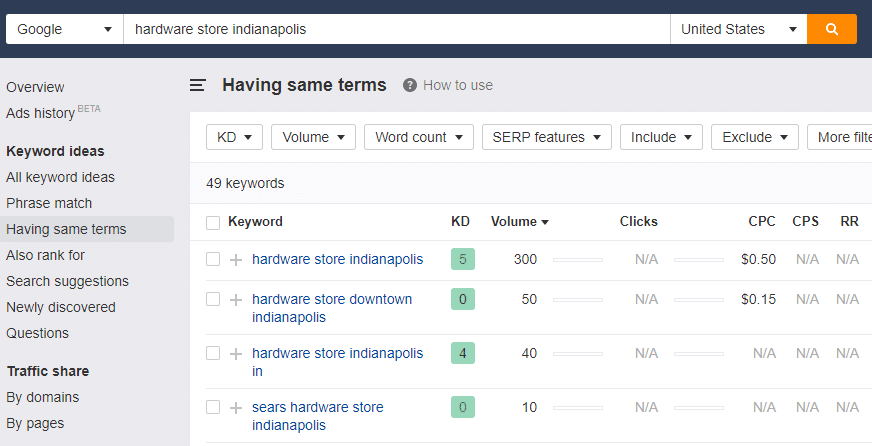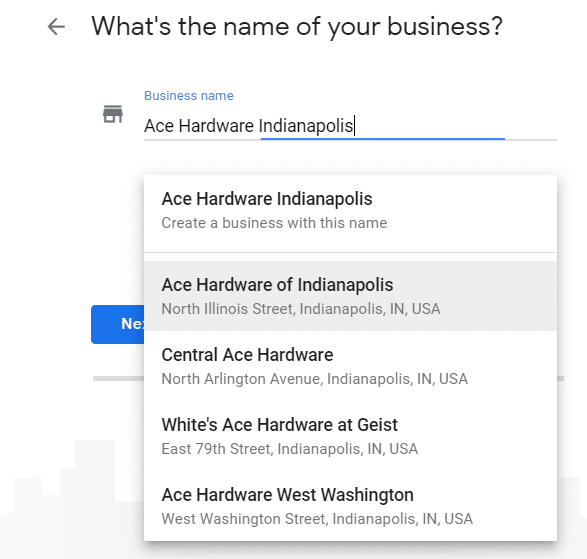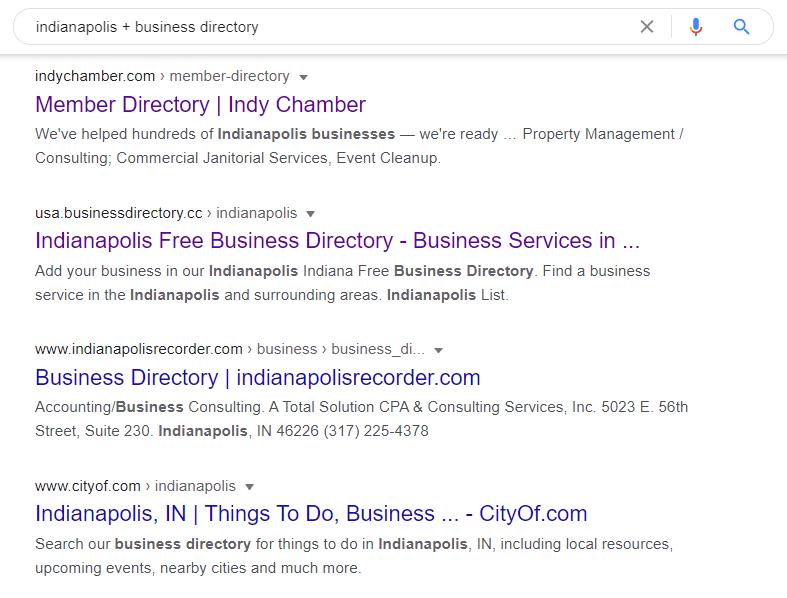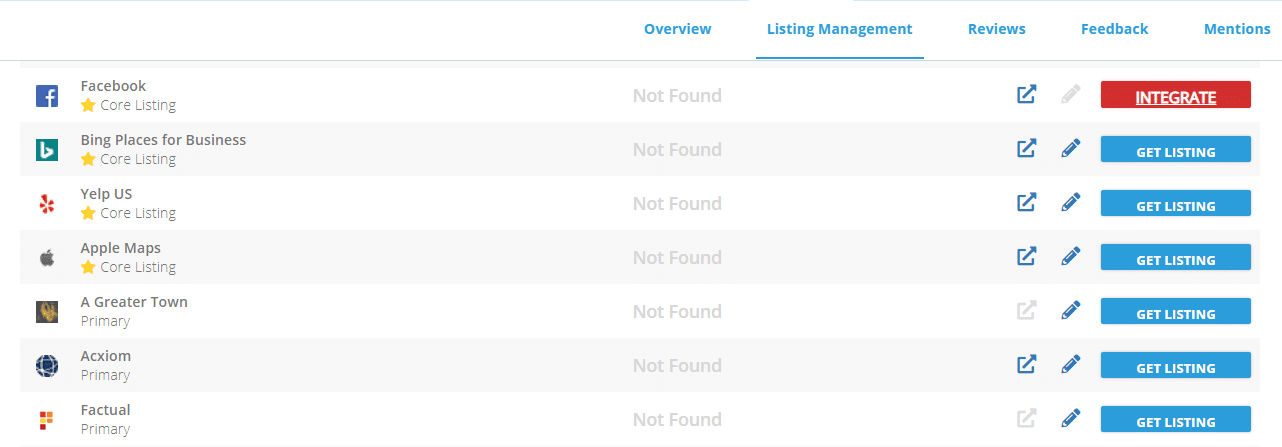Every transaction starts with a search.
Whether it’s to order food, buy clothes, or even get groceries, more customers are taking the digital approach for their needs.
Out of these searches, 46% are local. This means almost half of online users are inclined to visit physical stores of businesses they search for.
So, how do you rank for these local searches? Enter local SEO.
Optimizing for local search has the same schemes as you do with organic search. The difference is you’re focusing on the local audience – customers who are likely to become foot traffic and make direct contact with businesses.
We’ve created this local SEO guide as a starting point for agencies and businesses looking to take control of their local online presence. This guide is packed with local SEO tips taken from our own experiments and strategies, presenting actionable items to help you get started.
What is Local SEO?
In the simplest definition, local SEO is the process of optimizing a website to increase its visibility on local search results. This involves using geo-targeted keywords and content to help businesses appear to customers searching within their vicinity.
Businesses get local SEO services to increase brand awareness in their community and capitalize on “near me” searches, ultimately driving more foot traffic or boosting inquiries.
How do you rank for local SEO?
1. Do a local SEO audit
An SEO audit provides you with a diagnosis of a website’s health. This reveals the technical issues affecting the website’s ranking, as well as the recommended fixes based on the findings.
When optimizing for local, a local SEO audit may be more effective than a general website audit because it dives deeper into the components that affect local search result performance.
Competition Analysis
Identifying where the website stands in the competition makes it easier to adjust your local SEO strategy. Using different SEO tools, you can see which local keywords they’re targeting, which pages are ranking, and what type of content they’re writing about for their local audience.
On-page SEO performance
The foundation of an effective local SEO strategy starts with the website. If the on-page SEO performance of the website is spot on, everything else – from link building to citation promotions – will follow. Doing a local SEO audit will reveal if the website’s on-page SEO performance passes with high marks.
Backlinks Analysis
An important aspect of doing an SEO audit is to look at who vouches for the website. This is where backlinks inspection and analysis come in. This shows you if there are local websites or chambers of commerce linking back to the website.
Social Signals
Look at the ratings, reviews, and other forms of user-generated content that appear or points back to the site. These social signals contribute to a business’ online visibility when customers do a branded search, which presents an opportunity to drive traffic.
Before recommending and implementing a local SEO strategy, make sure you have a deeper understanding of how the website is performing. This helps you build your local SEO checklist while providing you with the foresight to make more informed decisions.
2. Target the right keywords for local search
One of the most important local SEO tips is to see what keywords the website is ranking for. By having keyword research as part of your SEO hygiene, you can uncover opportunities that allow the website to appear more when customers are searching for it.
Let’s say the website is a hardware retail store. You want to appear for searches that address the following:
- Where is the store located?
- What are the operating hours of the store?
- What’s the phone number of the store?
- How do I get to the store?
These are questions easily answered in the Google Snack Pack – the boxed result that shows the top three local business listings relevant to the query.
Optimize for Locations
The easiest way to optimize a website for local SEO is by having a location in your keyword. For example, if you’re optimizing a hardware store in Indianapolis, think of the keywords that customers are likely to use.
Use Ahrefs Keyword Explorer to check for the keywords and their search volume, then choose the ones with the highest amount of search volume.
Find Keyword Ideas in Community Forums
Another tip to add to your local SEO checklist when doing keyword research is to see which terms are used in community forums.
Community forums provide you with a goldmine of keyword ideas because of the questions people frequently ask. Some keywords may be informational in nature but others can be commercial or transactional keywords.
Optimize for Related Searches Keywords
This is a quick win.
Just type a root keyword in Google search (Example: hardware store Indianapolis), and go to the bottom of the search results.
Here, you’ll find searches related to the queries of online users.
Plug those queries into your keyword research tool and see if they have a good amount of search volume.
3. Localize the website’s content
Now that you have your keywords for local SEO, the next step is to inject these into the website’s content.
But, do you need to create content for every geo-targeted keyword? Ideally, yes.
Your content should support the keywords you’re targeting, which is why it only makes sense to localize the content you’re creating.
Provide Content for Area-specific Landing Pages
Let’s say the website is trying to rank for multiple locations. Don’t stuff all those geo-targeted keywords into one page. The best way to go around this is to create area-specific landing pages with local SEO content.
It will be easier to rank a page for every location than trying to rank the entire website with these multiple keywords.
Pro-tip: If the business caters to multiple locations but doesn’t have a physical address for these, don’t create individual pages for each location. Instead, create pages for locations within a reasonable distance to the business.
Use Local Events for Content Ideas
The difference between creating content for SEO and local SEO is the topics that capture the interest of your immediate audience. The idea here is to position the business as a leader in the local community.
Some local SEO specialists piggyback on local news stories and events as part of their content strategy. This allows the business to report information that’s relevant to its community and its local audience.
4. Optimize the site’s Google My Business
In every local SEO guide, you’ll always find a section dedicated to Google My Business – and for a good reason.
Google My Business is a powerful tool that allows businesses to manage their online presence across Google Search and Maps. It allows you to present information about the business, such as location, contact details, business operating hours, and even reviews.
Create or Claim the Website’s GMB Listing
Setting up a website’s Google My Business listing is fairly easy. You only need to create and verify the information of the business or claim an existing GMB listing.
One important local SEO tip when setting up the site’s GMB listing is to avoid buffing up the business name with keywords. It doesn’t work that way. More importantly, Google My Business guidelines don’t permit adding unnecessary information and may suspend the listing.
You need to provide the relevant category and enter all the information about the business accurately, which brings us to the next point.
NAP Should Be Consistent
With Google My Business, customers can easily see the information of a business even if the website isn’t ranking high. But to optimize for Google My Business means having consistent information across the board.
The Name, Address, and Phone Number associated with the GMB listing should reflect the real-world details of the business – from the registered business name to the exact location on the Maps.
Create a spreadsheet with all the details of the business so you can simply copy and paste the information as you create or update the listing. This makes it easier to cross-reference information if you’ll be updating other listings, as well.
Provide Regular GMB Posts
Google My Business posts are like mini-ads that you can use to provides updates on events, offers, or announcements for the business. Whenever customers search for the business and the GMB listing appears, these posts will also be displayed in the Knowledge Panel.
When customers click on the post, this expands to provide more information and show a call to action or link that will lead the customers to a specific landing page.
With a GMB post, a business can easily capture the attention of potential customers and provide them with valuable information right on the search results pages.
Monitor Google My Business Performance
The great thing with local SEO is you can adjust your strategy based on how the website is performing. The same can be done with Google My Business.
Using a Google My Business dashboard, you can monitor how customers engage with the business:
- How many phone calls did the business receive?
- Where is traffic coming from (Google Search or Maps)?
- How many customers do branded search versus a direct search?
- What’s the overall rating of the business?
By monitoring customer activities, you can experiment with your local SEO strategy and determine how to best engage with customers.
Optimize for Google Maps
Google Maps is a Google app that provides information on location with an interactive map. People use it to find the exact location of a business, get directions on how to get from one area to another, or even get interactive panoramas of locations with the app’s Google Street View.
It is, without a doubt, one of the most helpful and widely used Google apps for businesses.
However, Google Maps provides more than directions. With the right local SEO strategy, you can maximize the features of Google Maps and make an impact on how business websites appear on the local search results.
If you’ve claimed the Google My Business listing of the site and made sure the information is accurate, optimizing for Google Maps will be a breeze.
5. Local Link Building
When doing SEO link building, we go for websites with high domain authority. While the same principle applies when doing local SEO, you need a more laser-focused approach to building links.
The purpose of building links for local businesses is to create an opportunity to tap into their local audience and turn them into customers. It won’t make sense if you build links for a restaurant based in New York and get traffic from a website halfway across the globe.
For better rankings and targeted foot traffic, local SEO link building should focus on the following:
Build Local Citations
The benefits of having local citations are two-fold:
- The website receives a backlink from authoritative directories.
- It offers an opportunity to showcase the NAP of the website in a credible resource site.
The idea behind this part of your local SEO strategy is to get the business’ name and contact details out there as much as possible.
The manual way of building local citations is to use the search string “location + business directory” and this will yield business listings that you can reach out to.
If you want to automate the process, you can use the Reputation Management tool. This automatically scrapes the web and looks for authoritative listings that you can claim or update the business information.
Search for Brand Mentions
This is an old-school strategy but still effective and used by SEO specialists when doing local SEO.
Websites have likely mentioned the business on their content but haven’t linked back to the business. The easy way to do this is to use social listening tools such as Mention or Google Alerts to monitor brand mentions across the web.
Check the quality of these websites, their domain authority, and their relevance to the business. You can use Ahrefs to track the traffic and links the site is getting.
If you see the site is credible and has the authority, reach out to the website administrators and request for them to add a link. It’s a quick and easy hack for your link-building efforts.
Leverage Local Review Websites
Local review websites not only provide ratings about businesses in a specific area. But what makes these review websites a powerful tool for local SEO is they can easily tap into potential customers browsing through those reviews.
A few local review websites that you can reach out to are:
- Foursquare
- ConsumerAffairs
- Better Business Bureau
- Angie’s List
- Manta
If the NAP is consistent with that of the website and other listings, Google may rank the website higher on local search results.
6. Improve on-page with local SEO best practices.
Activities outside the website are just one portion of your overall local SEO tactics. On-page SEO carries the same weight in making the site rank on local results.
If the website’s on-page SEO is spot on, you can have a better foundation for building links and reaching out to other authoritative websites. Not only that, optimizing a website’s on-page is something you have more control over. You can experiment with your local SEO strategy and adjust based on the website’s performance.
When it comes to local SEO, think of it as you will optimize a website for organic search. The same strategies apply but you’ll be more focused on localizing the pages.
Add Local Keywords in the Meta Title and Description
This is important if the website has pages serving multiple locations. As you have geo-targeted keywords per location-specific pages, it makes sense that the Meta title and description contain these local keywords.
Having these geo-targeted keywords in the title and description makes it easier for Google to create a contextual relationship between the keywords and page content.
Implement Schema
When you dive into schema, you’ll find tons of categories for local businesses. Choosing the right one depends on what you want to highlight.
When optimizing businesses for local SEO, you can start with the Local Business Schema Markup. This will allow you to add other properties, such as a markup for opening hours, business address, and aggregate ratings for the business.
7. Leverage customer reviews
Reviews are part of how Google evaluates the local search performance of businesses. In fact, experts say reviews make up 15% of Google’s local pack ranking factors.
While having positive reviews can benefit a business by ranking on search results, these also serve a different purpose – building audience trust.
Customers see reviews as a trust signal. If you know how to leverage these reviews, a business will get more than a solid online performance but also a surge in potential customers.
Make It Easy for Customers to Leave Their Reviews
Allow customers to leave a review on the business’s Google My Business profile. You can create a short name and URL that allows the business to request reviews from customers.
When customers see this short link, they can rate and leave a review for the business.
Respond to Reviews – Even the Bad Ones
This is a given but the reality is that most businesses forget to respond to reviews when they get them.
Responding to reviews not only prompts engagement between customers and the business owner, but it also shows the business values every feedback. It shows transparency and ownership – two factors that are important for customers. More importantly, google encourages businesses to interact with their customers through reviews.
The more high-quality, positive reviews businesses receive, the more likely they are to rank and get found by their customers.
Key Takeaways: Time to Dominate Local Search Results
Local SEO is the same as you optimize for organic search—it’s a continuous process.
To build the online presence of a local business, you need to:
- See how the website performs with a local SEO audit.
- Target location-specific keywords.
- Create content that caters to the local audience.
- Claim, verify, and optimize the site’s Google My Business profile.
- Build links from trusted local websites.
- Improve on-page SEO with a focus on local search performance.
- Manage and respond to customer reviews.
We know there’s a lot of work involved, but that’s the fun part of doing local SEO. You get to see the results in both rankings and revenue.
If you’re ready to dominate the local search results, we urge you to try the steps above. It’s a process we’ve tested with tons of websites running on local SEO campaigns. We’ve seen it work and our clients couldn’t be any happier.
